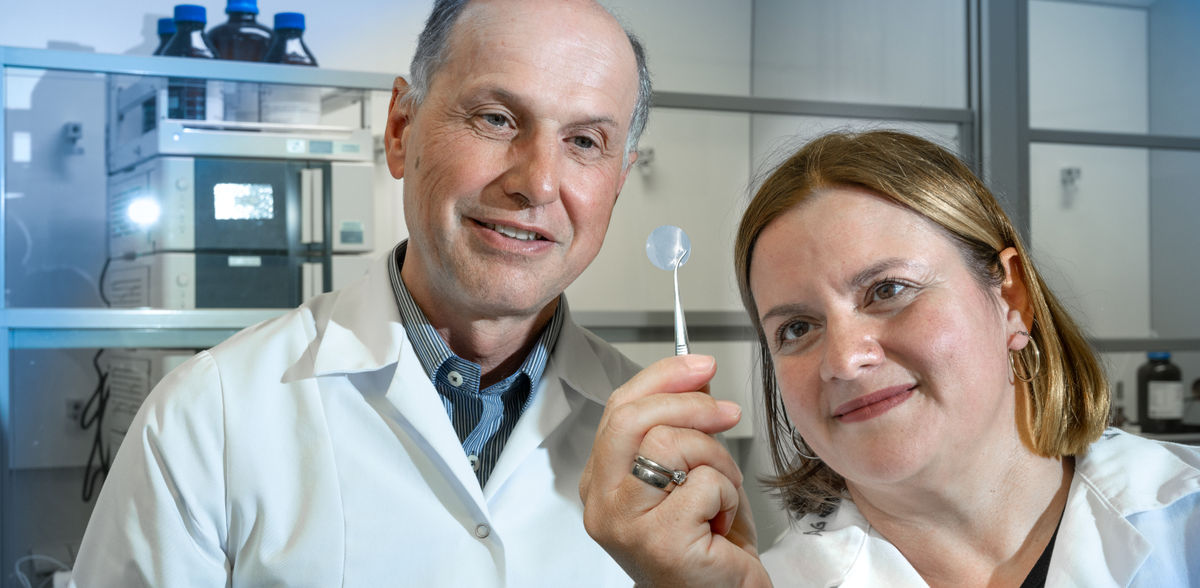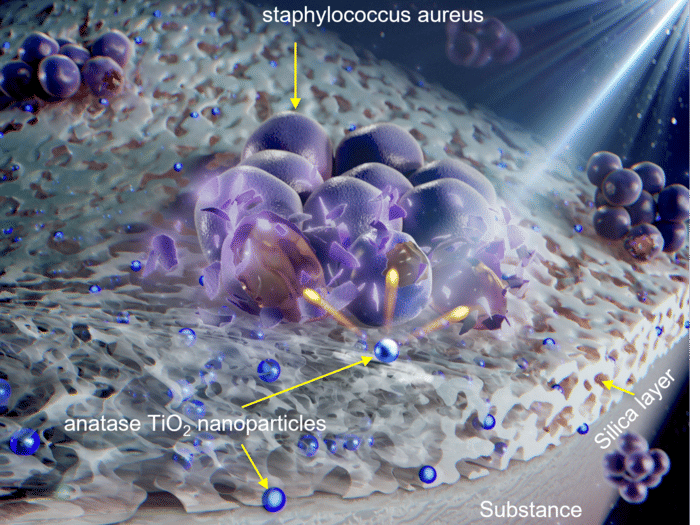Researchers develop gel filling for lithium-ion batteries
Improved safety and performance
A new type of gel, developed by chemists at the Martin Luther University Halle-Wittenberg (MLU), could help to make lithium-ion batteries safer and more powerful. The gel is designed to prevent the highly flammable electrolyte fluid from leaking. Initial lab studies show that it also improves the performance and service life of the batteries. The researchers report on their work in the journal "Advanced Functional Materials".
Lithium-ion batteries are real powerhouses. "They charge faster than conventional rechargeable batteries and can therefore be used in almost all areas of life," says Professor Wolfgang Binder, head of the Macromolecular Chemistry Research Group at MLU. "However, the electrolytes, which transport the ions that conduct the current between the electrodes, are highly flammable. This can cause the battery to catch fire or explode if it is damaged."
The researchers at MLU are working on improving the safety of lithium-ion batteries. "We have developed a polymer that can be filled into the battery cell. The electrolyte is bound to this substance, however the ions can continue to circulate freely between the electrodes," explains Dr Anja Marinow, a chemist at MLU. "The filling has a gel-like consistency and combines the high conductivity of liquids with the thermal stability and robustness of polymers."
Gel batteries with traditional electrolytes are essentially nothing new; they are used as starter batteries in motorbikes, for example. However, in combination with lithium ions, they represent uncharted technological territory. This is largely due to one particular challenge: "In conventional lithium-ion batteries, the liquid electrolytes create a stabilising layer on the electrodes when the battery is first charged. This is crucial for the performance and service life of the battery," explains Marinow. "However, we needed a fundamentally new design when it came to gel electrolytes." The researchers have solved this problem by integrating an ionic scaffolding into the polymer’s molecular chains.
Initial test runs in the laboratory show that the approach could increase battery safety and even improve service life and performance. "Around 3.6 volts is considered a critical value for the stability of the electrolytes in conventional lithium-ion cells," says Wolfgang Binder. "Our gel electrolytes even remain stable at over five volts." Sustainability is also a priority: the gels are designed so that they can be recycled relatively easily if there is a defect or at the end of the battery’s life. However, extensive long-term studies still need to be conducted before the new lithium gel batteries can be produced on an industrial scale.
The research work was carried out as part of the 'BAT4EVER’ project, which was funded by the European Commission through the Horizon 2020 programme. Universities, research centres and industrial partners from Germany, Belgium, Luxembourg, Italy, Spain and Turkey were involved in the project. The plan is to continue the research and expand on it, particularly in the area of sustainability, as part of the 'European Centre for Just Transition Research and Impact-Driven Transfer (JTC)’. The centre, which is currently being established at MLU, will develop research-based solutions that support structural change in Saxony-Anhalt, for example in the area of the circular economy or social innovation.
Original publication
Zviadi Katcharava, Torje E. Orlamünde, Lawrence T. Tema, Haobo Hong, Mario Beiner, Boyan Iliev, Anja Marinow, Wolfgang H. Binder; "Designing Conductive Pyrrolidinium‐Based Dual Network Gel Electrolytes: Tailoring Performance with Dynamic and Covalent Crosslinking"; Advanced Functional Materials, 2024-6-12
Other news from the department science
These products might interest you
Most read news
More news from our other portals
See the theme worlds for related content
Topic World Battery Technology
The topic world Battery Technology combines relevant knowledge in a unique way. Here you will find everything about suppliers and their products, webinars, white papers, catalogs and brochures.

Topic World Battery Technology
The topic world Battery Technology combines relevant knowledge in a unique way. Here you will find everything about suppliers and their products, webinars, white papers, catalogs and brochures.

































































